Panoramic photography for SU backgrounds and environments
-
Panoramic photography lesson 1: Panoramic Pivot Point or PPP (Not Nodal Point)
To consistently stitch together multiple photos into a single panorama you need to understand PPPs.
Let me show you what happens when you ignore the subject of PPP.

Click on the picture above and see what happens when the PPP is not aligned directly above your tripods center column. Look at the numbered call outs that show multiple floating and extended roof sections. Then go to point four and look at the discontinuity in the window frame. It is in shadow and fairly small so I have provided you with a cropped and enlarged section of the panorama taken from the area around point 4.
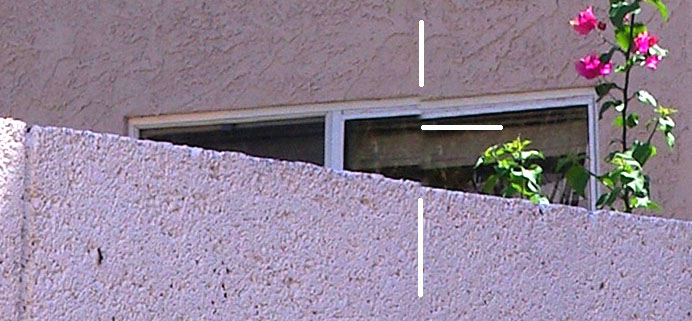
Notice the break in the wall and the jog in the window frame. This is the result of a misaligned PPP.I will demonstrate an easy way to properly align a PPP so you can produce panoramas minus the annoying artifacts. The tripod screw on your camera is never at the PPP. Sometimes you will see large telephoto lenses with their own tripod screws. Those attachment pints are to balance the physical weight of the lens over the tripod so it does not tip over or put undue strain on the point where the lens enters the camera. That tripod screw on the lens is also not likely to be at the PPP.
What you need at a minimum is an xy stage. The photo below shows an xy stage mounted on my tripod. When I mount my camera on top of this stage, I can move camera and lens left to right and back and forth until the PPP is directly over the center column of the tripod. When this is done you can produce the perfectly aligned stitched panorama.
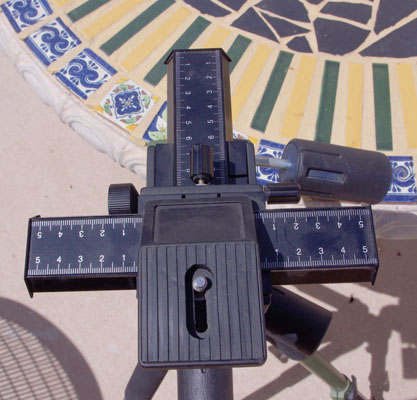
You may be wondering how do you align the PPP since you don't know where it is and it is not marked on the lens. In the photos below you will see what happens with a misaligned PPP.Looking through the camera I will show you what a misaligned PPP looks like.
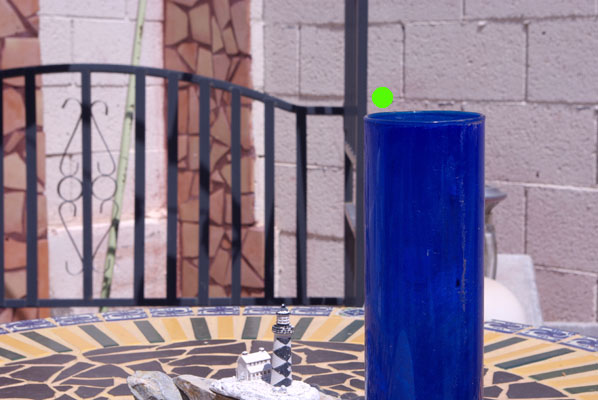 See how the blue glass and the black metal rod line up at the green dot? Now I swing my camera left and right on the tripod and the near and far objects should line up but they don't. As the camera swings to the side a gap opens at the orange dot between the black rod and the blue glass? This is what you do not want.
See how the blue glass and the black metal rod line up at the green dot? Now I swing my camera left and right on the tripod and the near and far objects should line up but they don't. As the camera swings to the side a gap opens at the orange dot between the black rod and the blue glass? This is what you do not want.To fix this problem you first shift the lens laterally along the x axis so the center of the lens barrel passes directly over the center of the tripod head. Now you again align two objects in the center of your view finder. Using trial and error you move your camera/lens system back and forth along y. And after each move you swing the lens left and right to see if the black bar move apart. When you finally find the place where they stay together as you swing the lens back and forth, you have found the PPP. As you can see below, I have fond the proper front/back position for the PPP because as I rotate the the camera on the tripod, the blue glass in the foreground and the black post in the background stay aligned.
Image centered

Objects stay aligned as you sing the camera left to right Swing the camera left and right around the tripod head.
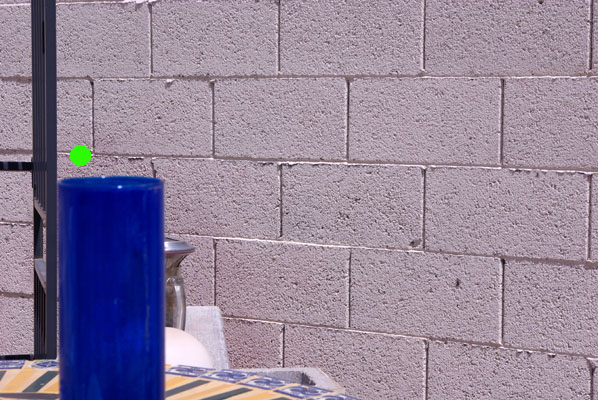
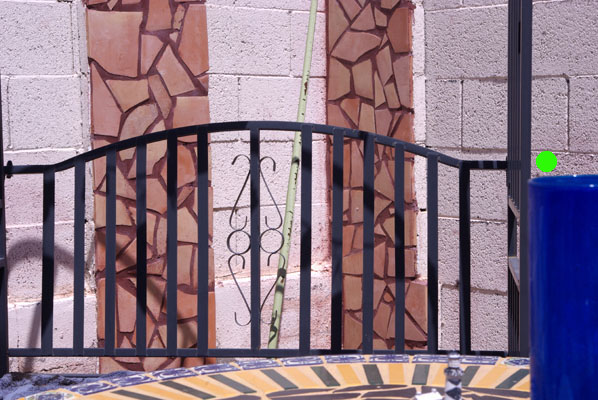
I like prime lenses (non zoom) for this kind of work as a change in focal length changes the placement of the PPP. Mark the position of the x/y stage for each of your lenses and you will only have to do this once for each lens. If you are going to add extra rows of pictures above or below the horizontal you will also need a cradle, for the camera and stage, whose pivot axis goes horizontally through the PPP of the lens.
Once you master this kind of camera work, you will be able to photograph spherical environments that provide both backgrounds and lighting for your renders.
I welcome comments that would improve this tutorial.
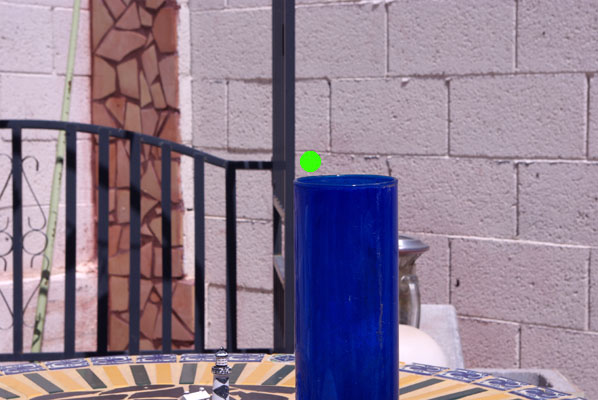
-
@roger said:
I welcome comments that would improve this tutorial.
Well, I cannot add anything that would improveit so "just" a big thanks.

I am (also) about to dive into spherical photography so anything that adds to my (basic) knowledge is very much welcome! -
Thanks Roger, you really explain it well. Learnt so much from you!
I ended up going for the nodal ninja 4 with advanced rotator head. It's a beautiful piece of machinery and finding the PPP is a doddle, the connections and arms are so well built there is virtually no movement between shots and while adjusting the camera's position. This is a fantastic reference, thanks again! I will be posting some equirectangular panos in the next couple of days still sussing out nadir shots though

Advertisement







